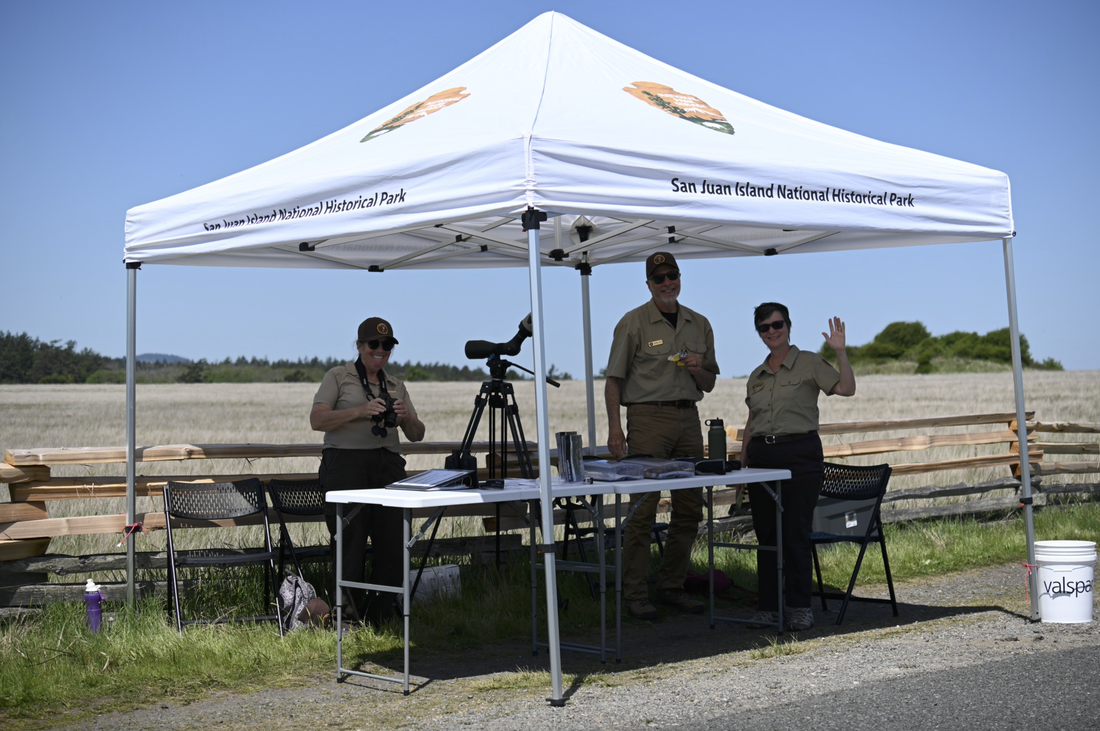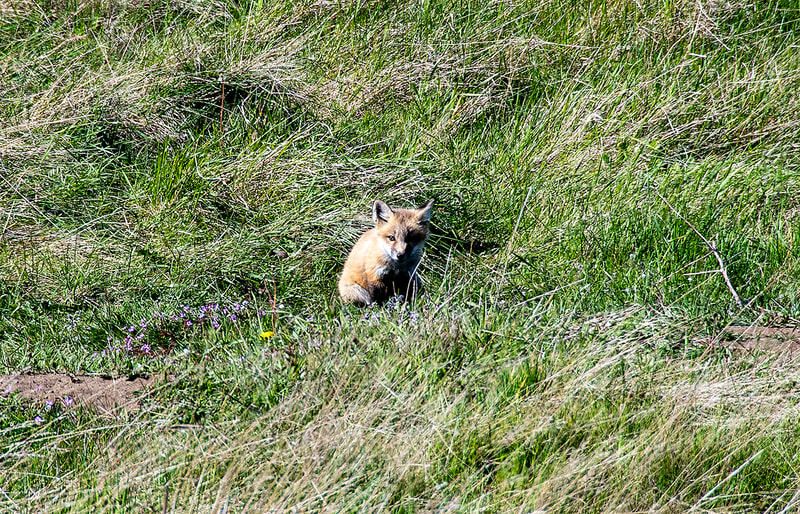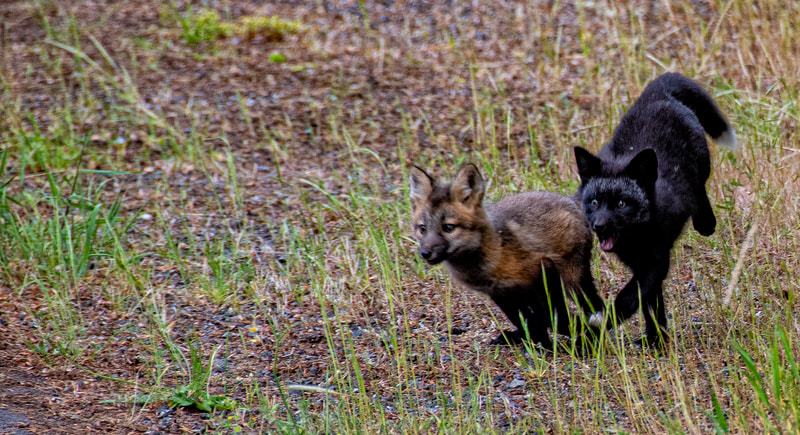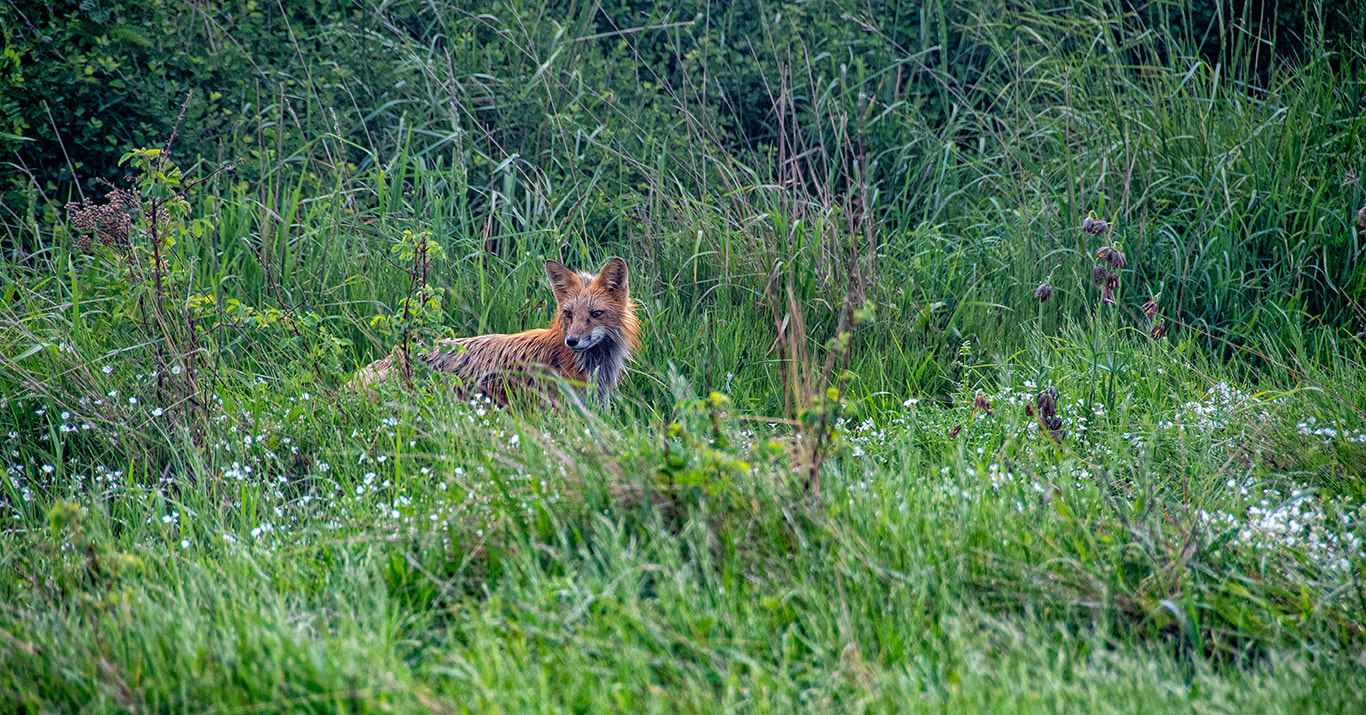|
Steven We are, all of us, creatures. We belong to this gorgeous world in all the same ways that the [foxes on the prairie] belong to this world. In all the same ways that the fog-shrouded trees belong to this world. You may come someday to feel trapped in asphalt and concrete, but you are not trapped. When you are restless or lonely or afraid, go for a walk in the park or a hike in the woods. Plant a little garden, if only in pots on the sidewalk. Being in the wild world will make you feel better. Get your hands dirty. I promise you will feel better. And merely by falling in love with the world, you will begin to make it better. Human beings will work to their dying breath to save something they love. Fall in love with the wild world, and you are taking the first step toward saving it. The world is beautiful. People are good.--Margaret Renkl, New York Times Good morning from American Camp, San Juan Island National Historical Park, where we've now been in residence for two weeks. Melanie and I are truly fortunate that the National Park Service has, in exchange for our volunteer services, provided us with a great spot to camp with a spectacular view of the Salish Sea and Olympic Mountain Range to our west. So much has happened in our two weeks here that it's a bit difficult to know where to start. We officially opened American Camp visitors' center on Saturday, May 13th. English Camp will officially open this coming Saturday, May 20th. We had two more days of training for V.I.P.s the beginning of last week before we began work Saturday past. The dedication of and the depth and breadth of our park service rangers' knowledge about San Juan Island National Historical Park is humbling. There are historians, biologists, botanists, geologists, and tribal liaison between the park and Coast Salish peoples, among other specialists. While I'm not sure how much of what was presented I've retained (I'm definitely the weak link between me and Melanie in that regard), I'm certain as our season here progresses, we'll be able to use much of the information provided us to assist park visitors in their enjoyment of this national park treasure. The Pig War and an emphasis on the value of negotiation over war in resolving conflict is the reason the park was established in 1966, but our Superintendent, Elexis (Lex) Fredy, was clear in sharing with us volunteers that the indigenous peoples -- the Coast Salish tribes -- are an integral part of the park's and the island's history. The new visitor's center at American Camp contains thoughtful exhibits to this end. At English Camp, a Reefnet Captain Pole and two Salmon Story Boards are there to remind visitors that indigenous people lived on the land for centuries before the English set up camp there. The Captain Pole was carved by Temosen Charles Elliott, Tsartlip, and the Story Boards by Jewell Praying Wolf James, Lummi. Our volunteer days have been divided thus far between the American Camp visitors center and a wildlife viewing station we will set up on Friday, Saturday and Sunday each week. The brainchild of Ranger Allison Herkey, the viewing station allows visitors to view wildlife in the park at a proper distance and, if visitors own an iPhone, connect via hotspot to make images and movies in real time as keepsakes. On days the viewing station is not set up we'll rove the park trails for half of each work day, interacting with visitors as interpretive rangers. Melanie
I'm so, so grateful for the National Park Service. San Juan Island National Historical Park commemorates "Peace Over War" in the telling of the peaceful resolution of the "crisis" around the establishment of the final boundary between the U. S. and Canada. The so called "Pig War" is remembered and is held out as a splendid example of successful diplomacy. However, the true heart of this Park is its interpretation of the indigenous peoples who inhabited this land since time immemorial, and the stunning and diverse flora and fauna of the land and sea found in this Eden. The new Visitors' Center at American Camp is but two years old, and it is thoughtfully curated in collaboration with leadership from the various Coast Salish peoples. In fact, you could fairly say that it is indigenous-centric. My love affair with the National Park Service began in my youth when I first visited the Great Smoky Mountains National Park. When I started working and traveling for Episcopal Peace Fellowship, Steven and I began visiting the National Parks in earnest, and I firmly believe that the Park system is one of the few ways our federal government effectively demonstrates its love for the American people and her resources. In 2019, we had the life-changing opportunity to be at Fort Monroe National Historical Park for the 400th anniversary of the first slave ship landing at Point Comfort, and I wrote a short love note about the experience HERE. The image above captures a gesture of welcome which I have experienced first hand at a gathering of the Swinomish over near what we call LaConner, WA last month. I was thrilled to find the raised hands of gratitude and honor as one of the first things visitors to American Camp see -- signaling to all who come in that this is a National Park which celebrates all the lives which have been nurtured here, have thrived here, and still have connection to this holy paradise. Our work this summer will include supporting the rangers who are protecting the endangered Island Marble Butterfly, educating visitors about the rare prairie at American Camp and the animals who call it home, and, of course, more broadly helping a new generation of visitors to fall in love with the National Park Service and its mission.
1 Comment
Ranger Jeff
5/18/2023 08:23:51 pm
It’s a pleasure to have you both with us. I sometimes forget how incredible this place is. Thanks for reminding me.
Reply
Leave a Reply. |
AuthorsSteven and Melanie Archives
April 2024
Categories |




























 RSS Feed
RSS Feed